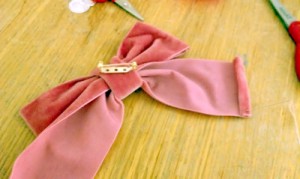Why We Need Things, Mihaly Csikszentmihalyi
With our own evolution comes an “increasing dependence on objects for survival and comfort” (Csikszentmihalyi, 1993). In this essay the author presents objects, which we often don’t even think about, as being dangerous. Although they are man-made, they are not necessarily under our control. They begin to take on a life of their own as creating an object always suggests the next incarnation of the object. I never thought of objects in this way, but here the author compares objects to parasites, whose survival is at the expense of the human host. I sort of disagree here with Csikzentmihalyi, because hosts usually have no control over the parasite that is feeding off of it. However, I believe we do have control over objects, we just choose not to use it. We are the enablers that allow these objects to take on a life of their own, however this also gives us the power to stop them. The thing is we do not have the will power to do so, and maybe this is the point the author is trying to make. I agree with the comparison to the parasite only in that both objects are potentially dangerous to their host. As he mentioned, objects have become a projection of our selves since the beginning of time. A spear to a Native American is something that over time became so embedded in their lives, just as the objects that people keep throughout their home are expressions of themselves. The big difference that Csikzentmihalyi does not mention, is that in the case of the Native Americans, a spear was a basic necessary tool for survival. Contrarily, many objects that people keep today are excessive and go beyond the basics. It is ultimately up to us to decide when to disable the power of objects and in turn protect ourselves from them.
The Computer Revolution Hasn’t Happened Yet, Alan Kay
What I found most intriguing about this lecture was the comparison of computer processes to biological processes. It was really insightful when he mentioned that objects such as a dog house are not scalable. The scaling of the size of the object is not equivalent to the scaling of its strength, therefore we have to re-think its structure. However, he discusses how cells scale by factors of a hundred and even a trillion. In addition, they hold 60 billion information components each, and only 50 cell divisions are necessary to make a child. In comparison to these processes, the computer cannot be regarded as large, fast, or complex. Kay suggests we need to look at biological processes and figure out how they do it, and how we can adapt this to computers. This was in 1997, so looking back on this now do we believe computers have adapted in this way? Has the computer revolution begun?
Everyday Things, Norman
I found this reading especially interesting because it brought up endless issues that we as designers face. Norman suggests a sort of psychology of materials, and talks about the affordance of materials (the perceived and actual properties). For instance, glass is to see through and to break, wood is for solidity to write on or carve in. He also says that when simple things need pictures, labels, or instructions, the design has failed. When I think about how many objects today contain one of these things, it almost seems inevitable. I think this relates to the point he made about the focus of aesthetics taking away from usability. Designers often have this notion that things should blend in and be hidden, which blinds them to the real issue at hand – design. How do we get the heart of the design to be front and center? He discusses visibility, and how the crucial parts of a design should be visible. Feedback should also be present to let the user know if they are using the product correctly or not. How do we grapple with the idea that what may be the best design solution, may not be the most visually pleasing? Do people want something more aesthetic even if it not necessarily usable? I think some do. How do we switch the mindsets of people to be focused on design functionality instead? These are issues that designers have to face, and a great design will ultimately combine functionality with aesthetics – it just takes a little more creativity, thinking, and working to get there.

















Comments!